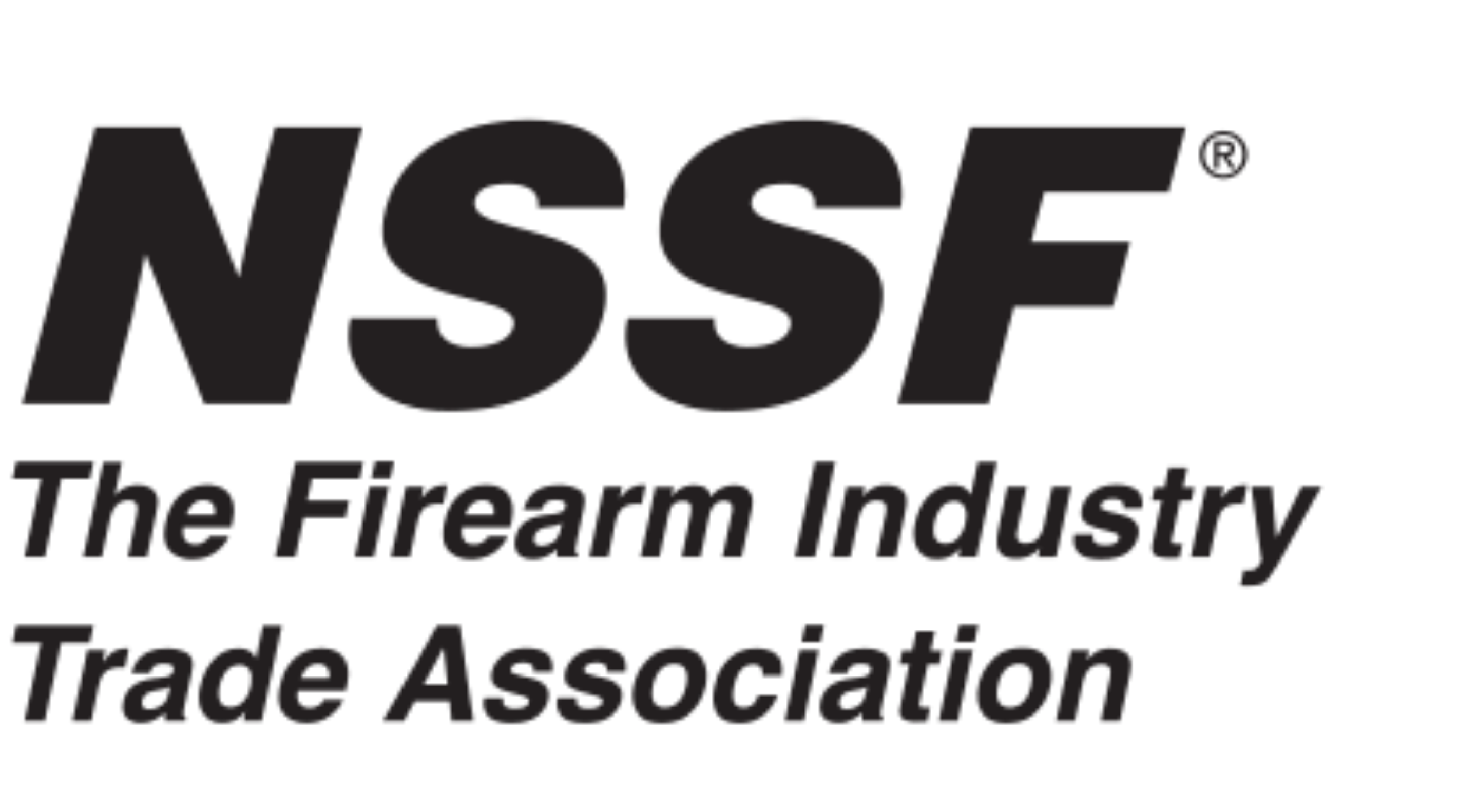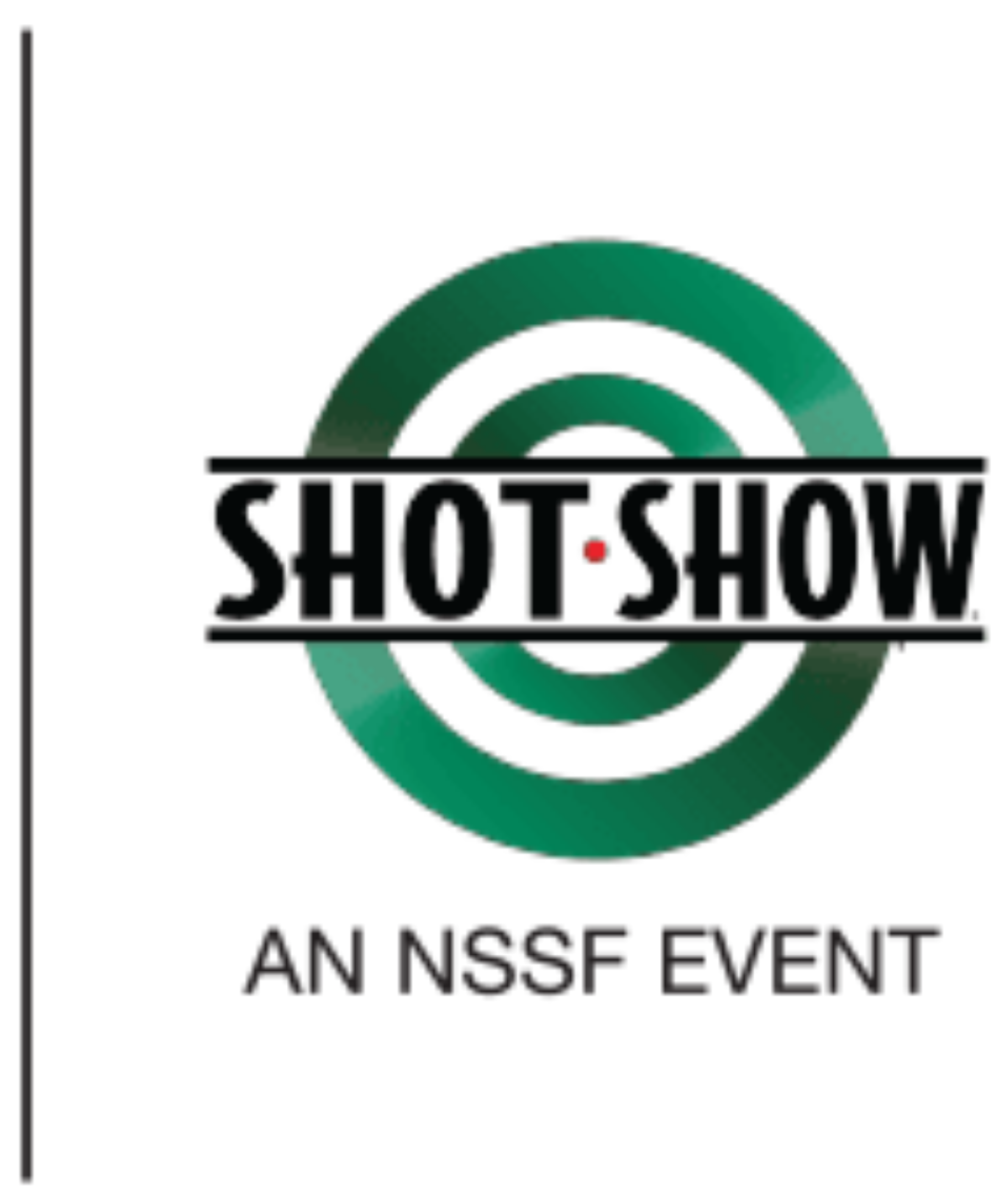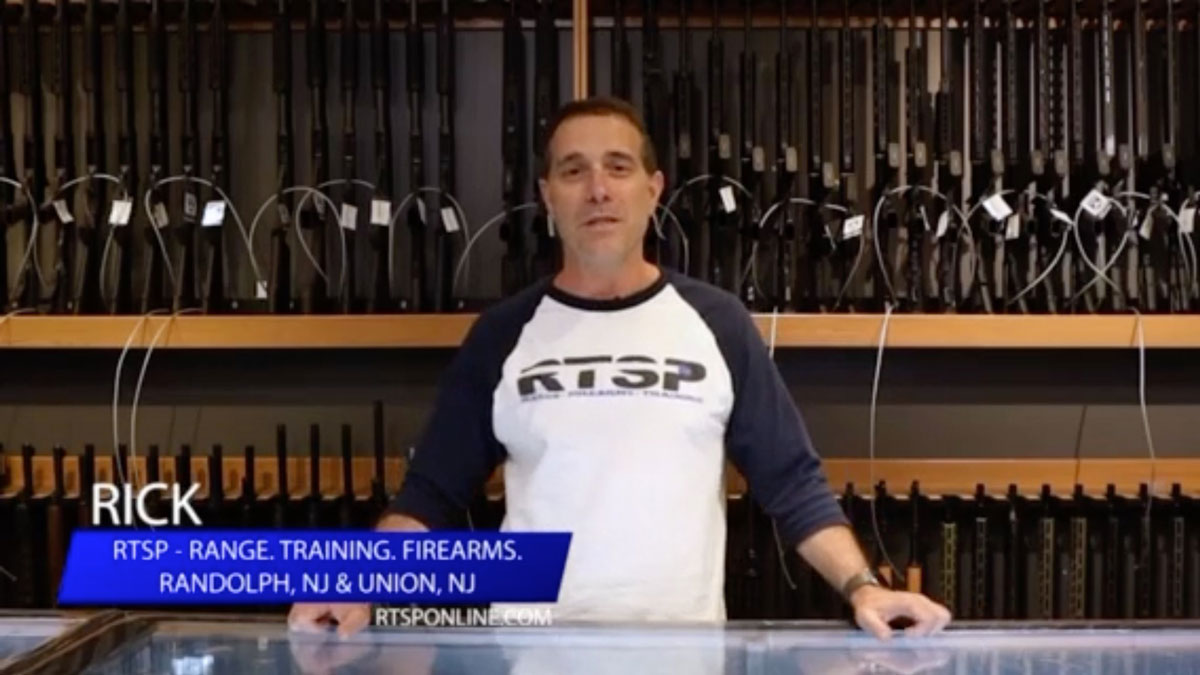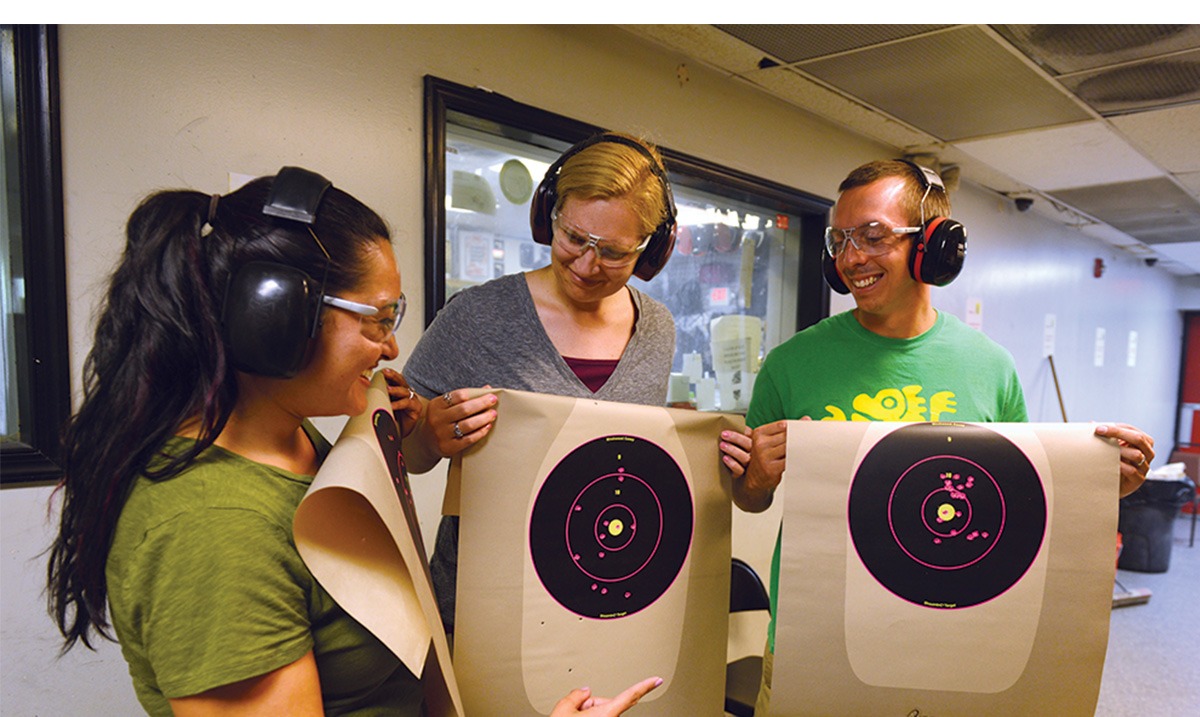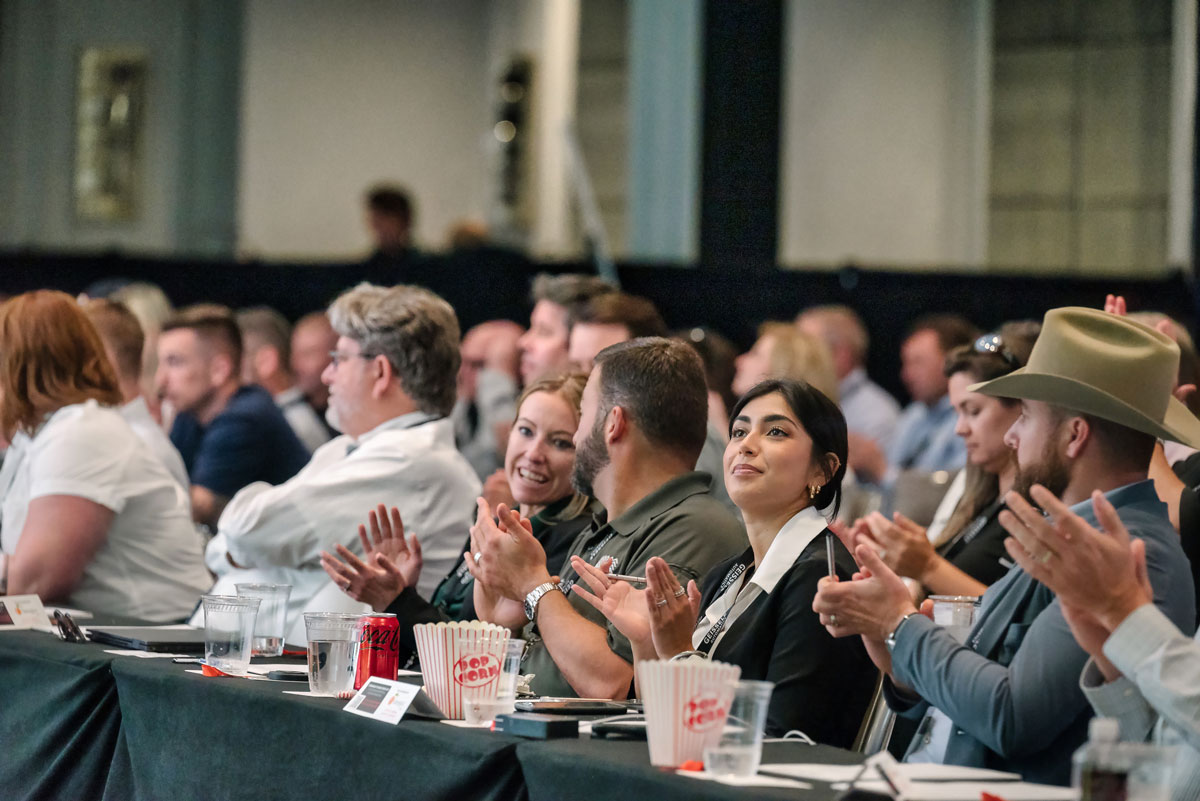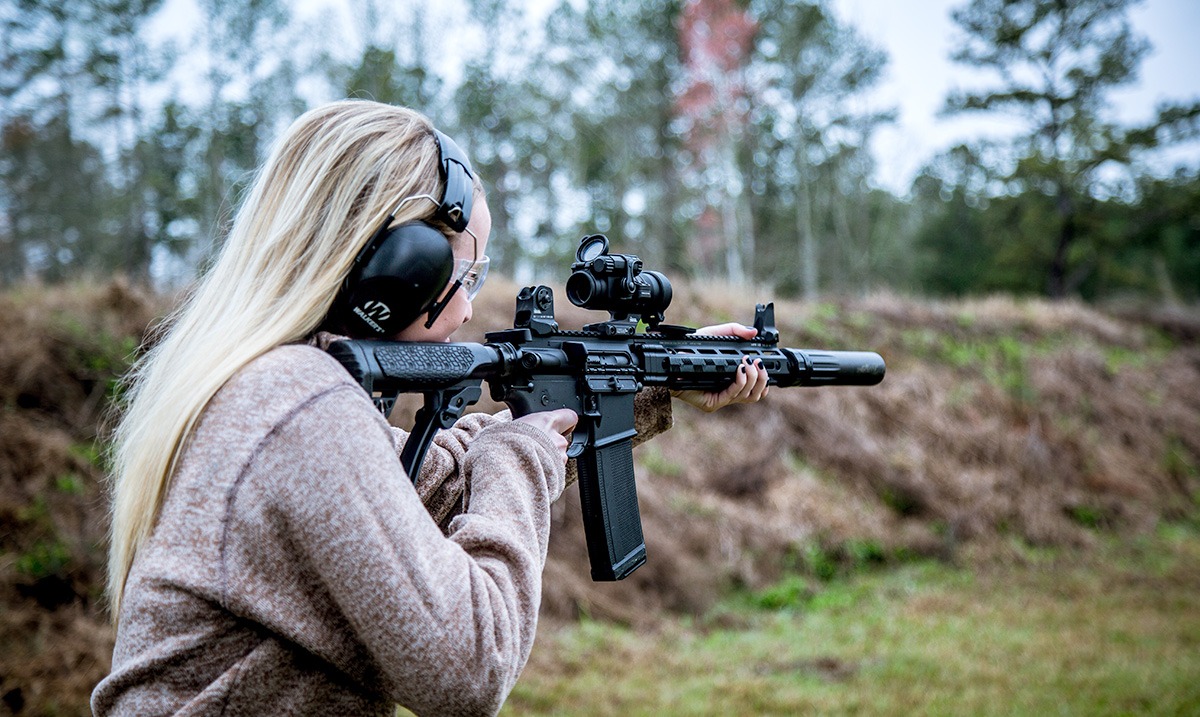I have received a firearm on trade. It was commercially produced before 1968 and has no serial number. I must note the physical markings on the firearm in my records. What do I do in this case?
Unfortunately, marking requirements that existed before 1968 did not apply to all firearms. Many of the firearms manufactured and imported prior to 1968 bear no serial numbers or other markings. Licensees who receive these firearms should note in each descriptive column in the acquisition record the physical markings that appear on the firearms. If no serial number was placed on the firearm, it should be specifically noted that “Firearm has no serial number” or recorded “NSN.” Remember, however, it is illegal to remove or alter a firearm’s serial number, and a licensee should report such a firearm to the nearest ATF office. Refer to the ATF P 3317.2, Safety and Security Information for Federal Firearms Licensees.
NSSF Member Webinars
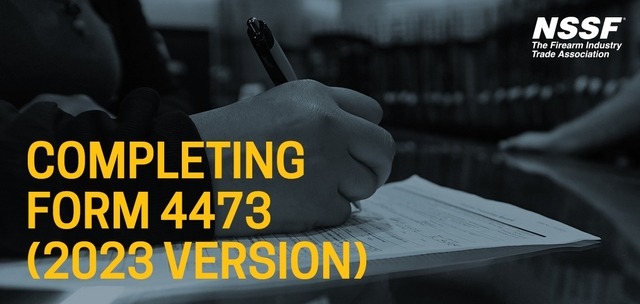 |
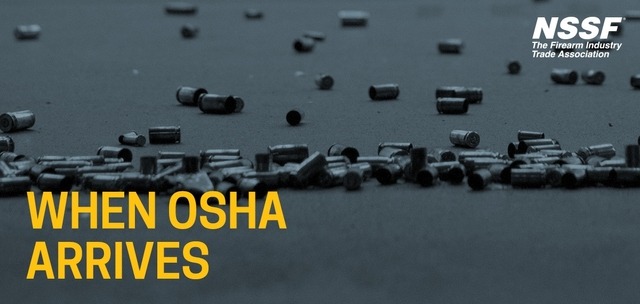 |
| From transfers to inspections to trace, the new (as of 2023) Form 4473 is a critical document for all firearms retailers. This course is designed to take you step-by-step and line-by-line through the nuances of completing each section of ATF Form 4473. | Presented by Jason Smith, this 3 part course focuses on range safety and health specifically through the lens of the OSHA’s 7 Core Elements and recommendations for workplace safety. |
More Range Compliance Resources Here
Looking for more education opportunities?
Consider NSSF’s SHOT University Online, a one-stop e-learning platform for firearms retailers and ranges. On-demand and free for NSSF members, this library of interactive online courses provides a deep dive on critical topics ranging from compliance and regulatory issues to operational guidance and business improvement for both business owners and employees.
Learn more about SHOT University Online
Looking for more guidance?
NSSF’s Premium Range Membership offers unparalleled protection and benefits. Designed to offer the best protection and benefits in the industry, this membership is available to any qualifying NSSF range or retailer/range member who is not currently facing any OSHA and or state OSH violations.
Membership directly supports NSSF in its mission to promote, protect and preserve our industry and our sports. NSSF stands in defense of every segment of our industry on Capitol Hill and in state capitols nationwide and is working on behalf of every one of its members every day to strengthen our industry. Start your application today, or upgrade your existing membership to premium.
24-Hour Compliance Hotline
NSSF members can greatly benefit from the NSSF’s Retail Member Hotline. The toll-free hotline will bring calls in to the NSSF headquarters on a 24/7 basis. If questions regarding compliance, transactions, legislation or any other topic cannot be answered at the time of the call, an all-out attempt will be made to provide the answer within 24 hours.
NSSF members have exclusive 24/7 access to the NSSF’s Retail Member Hotline. Non-member retailers can view some of the questions that have been asked and answered through this service here.
Compliance Resources for Members
NSSF offers an array of resources and information to help members operate their businesses in compliance with laws and regulations. NSSF’s regulatory compliance resources include articles, newsletters, videos, online training courses, legal and regulatory compliance consultants and more. Log in to access.
I started keeping my records of acquisition and disposition on loose sheets of paper. Can I three-hole punch the sheets and put them in a binder or get them spiral-bound and satisfy the bound book requirement?
You may maintain records of acquisition and disposition in a binder or spiral-bound format, as long as the holes that are punched do not remove or obstruct any required information. The format must follow that prescribed in the regulations, and the pages must be numbered consecutively. [27 CFR 478.121 and 478.125] If you use a three-ring binder or a spiral notebook for the A&D records, you must be careful to ensure that no pages get lost.
What information should be placed in the A&D Record with respect to the heading "Manufacturer and/or Importer"?
The column heading “Manufacturer and/or Importer” has long been a bit of a misnomer. Since the publication of the 2014 edition of the ATF “Federal Firearms Regulations Reference Guide” (the white book), ATF has officially modified the table that shows the required format of A&D records to change that heading to, “Manufacturer and Importer (if any)”. Both the name of the foreign manufacturer and the name of the U.S. importer have been required in the A&D records since the regulations were written, but the example table showed that somewhat misleading column label in the regulations. If a firearm is manufactured outside the United States and imported into the United States, both the foreign manufacturer’s name and the U.S. importer’s name must be shown in the A&D records. That information is required to be engraved on the firearm, and FFLs should get that information from physically examining every firearm. (NOTE: While there is a minor exception to this requirement in the instructions for block 24 of ATF Form 4473, we recommend that the A&D description and the Form 4473 Section D description be identical for every firearm. There is no valid reason for them to be different.)”
What importer should be entered into the A&D book when the foreign manufacturer and the importer have the same company name?
Imported firearms are required to be engraved with both the name of the foreign manufacturer and the name of the domestic importer, even if they are the same company. Therefore, the names as marked on the firearm for the manufacturer and for the importer are the names that should be entered into the A&D Book.
24-Hour Compliance Hotline
NSSF members can greatly benefit from the NSSF’s Retail Member Hotline. The toll-free hotline will bring calls in to the NSSF headquarters on a 24/7 basis. If questions regarding compliance, transactions, legislation or any other topic cannot be answered at the time of the call, an all-out attempt will be made to provide the answer within 24 hours.
NSSF members have exclusive 24/7 access to the NSSF’s Retail Member Hotline. Non-member retailers can view some of the questions that have been asked and answered through this service here.
Compliance Resources for Members
NSSF offers an array of resources and information to help members operate their businesses in compliance with laws and regulations. NSSF’s regulatory compliance resources include articles, newsletters, videos, online training courses, legal and regulatory compliance consultants and more. Log in to access.
What information should be entered into the A&D records in regards to the heading "Type" under "Description of Firearm."
The information required to be entered refers to the “types” of firearms as defined by 27 CFR 478.11 and 479.11. Types such as pistol, revolver, rifle, shotgun, frame, receiver, pistol grip firearm, silencer, any other weapon (AOW) etc., are all acceptable. Entries such as semi-automatic, bolt, lever, etc., are not types of firearms and are not acceptable in the type of firearm field.
For more information on this question, please see this article: A&D Entries for Type of Firearm
If I have 2 separate FFLs at the same address, should I keep the inventory separate and use separate Acquisition and Disposition Records?
Yes, you must keep your inventory for each FFL separate and use separate record-keeping for each.
24-Hour Compliance Hotline
NSSF members can greatly benefit from the NSSF’s Retail Member Hotline. The toll-free hotline will bring calls in to the NSSF headquarters on a 24/7 basis. If questions regarding compliance, transactions, legislation or any other topic cannot be answered at the time of the call, an all-out attempt will be made to provide the answer within 24 hours.
NSSF members have exclusive 24/7 access to the NSSF’s Retail Member Hotline. Non-member retailers can view some of the questions that have been asked and answered through this service here.
Compliance Resources for Members
NSSF offers an array of resources and information to help members operate their businesses in compliance with laws and regulations. NSSF’s regulatory compliance resources include articles, newsletters, videos, online training courses, legal and regulatory compliance consultants and more. Log in to access.
I have a question regarding entering a pistol in my A&D Book. The pistol in question is an FN 502, made by Umarex in Germany for FN America. Technically the manufacturer is Umarex and the importer is FN America, LLC. What is the proper way to enter this into my A&D book?
Since 1968, the data FFLs have needed to enter in their firearms A&D record for imported firearms has included both the foreign manufacturer and the US importer. As stated in ATF regulation 27 CFR 478.125 (e), “The record shall show the date of receipt, the name and address or the name and license number of the person from whom received, the name of the manufacturer and importer (if any), the model, serial number, type, and the caliber or gauge of the firearm….”
Since August 24, 2022, the column heading where this information is entered is “Manufacturer, importer and/or ‘Privately Made Firearm’ (PMF) (If privately made in the U.S.)”.
A very common way that FFLs enter this information is with a ‘/’ between manufacturer and importer ‘Umarex/FN America’.
For all imported firearms, this information is on the firearm. Be sure to examine them carefully, particularly shotguns, to locate it.
FFLs need to be mindful that the same information should be recorded on question 1 of Form 4473.
24-Hour Compliance Hotline
NSSF members can greatly benefit from the NSSF’s Retail Member Hotline. The toll-free hotline will bring calls in to the NSSF headquarters on a 24/7 basis. If questions regarding compliance, transactions, legislation or any other topic cannot be answered at the time of the call, an all-out attempt will be made to provide the answer within 24 hours.
NSSF members have exclusive 24/7 access to the NSSF’s Retail Member Hotline. Non-member retailers can view some of the questions that have been asked and answered through this service here.
Compliance Resources for Members
NSSF offers an array of resources and information to help members operate their businesses in compliance with laws and regulations. NSSF’s regulatory compliance resources include articles, newsletters, videos, online training courses, legal and regulatory compliance consultants and more. Log in to access.
Where can I find the ATF's recent open letter to all FFLs providing firearm storage for individuals?
The Bureau of Alcohol, Tobacco, Firearms and Explosives (ATF) sent the following notice regarding firearm storage at FFLs. Please review the notice in its entirety.
From ATF:
On March 14, 2023, President Biden issued an Executive Order 14092 on Reducing Gun Violence and Making Our Communities Safer. Among other things, that order emphasized the need for Federal agencies to promote the safe storage of firearms. The attached open letter assists Federal Firearms Licensees (“FFLs”) in understanding their obligations when they choose to provide firearm storage services to their customers and the public.
Find the open letter here and learn more at www.atf.gov
If you have any questions, please contact FIPB@atf.gov
NSSF Member Webinars
 |
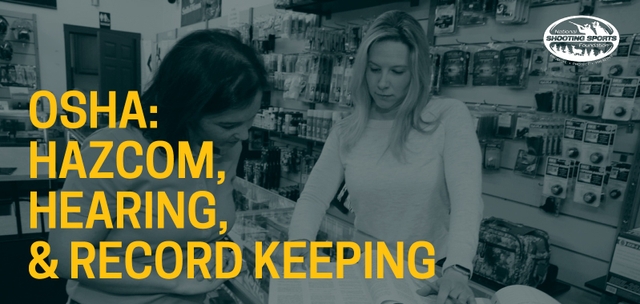 |
| Presented by Jason Smith, this 3 part course focuses on range safety and health specifically through the lens of the OSHA’s 7 Core Elements and recommendations for workplace safety. | Presented by Erica Moncayo, this course is made up of 3 modules which review three of the most pressing topics safety and health-related topics for ranges. |
More Range Compliance Resources Here
Looking for more education opportunities?
Consider NSSF’s SHOT University Online, a one-stop e-learning platform for firearms retailers and ranges. On-demand and free for NSSF members, this library of interactive online courses provides a deep dive on critical topics ranging from compliance and regulatory issues to operational guidance and business improvement for both business owners and employees.
Learn more about SHOT University Online
Looking for more guidance?
NSSF’s Premium Range Membership offers unparalleled protection and benefits. Designed to offer the best protection and benefits in the industry, this membership is available to any qualifying NSSF range or retailer/range member who is not currently facing any OSHA and or state OSH violations.
Membership directly supports NSSF in its mission to promote, protect and preserve our industry and our sports. NSSF stands in defense of every segment of our industry on Capitol Hill and in state capitols nationwide and is working on behalf of every one of its members every day to strengthen our industry. Start your application today, or upgrade your existing membership to premium.
24-Hour Compliance Hotline
NSSF members can greatly benefit from the NSSF’s Retail Member Hotline. The toll-free hotline will bring calls in to the NSSF headquarters on a 24/7 basis. If questions regarding compliance, transactions, legislation or any other topic cannot be answered at the time of the call, an all-out attempt will be made to provide the answer within 24 hours.
NSSF members have exclusive 24/7 access to the NSSF’s Retail Member Hotline. Non-member retailers can view some of the questions that have been asked and answered through this service here.
Compliance Resources for Members
NSSF offers an array of resources and information to help members operate their businesses in compliance with laws and regulations. NSSF’s regulatory compliance resources include articles, newsletters, videos, online training courses, legal and regulatory compliance consultants and more. Log in to access.
If change my personal FFL to my business FFL before my personal FFL expires so I will be able to transfer the guns into the new FFL what happens to my A/D books and 4473? If I do gunsmithing A/D book would need to get new books for everything I do in the new business name?
It would not be a change. If you decide not to renew your personal FFL and want to transfer your inventory into your business FFL you can do that. What you would do is not renew your personal FFL and turn in the license, Form 4473, and A&D record to ATF. You will need to log out all of the firearms that you currently have in inventory (open dispositions in your personal A&D record) into your business A&D record. You need to ensure there are no open dispositions in your personal A&D record before turning it into ATF. You do the same for gunsmithing. Although, if you do not have an A&D record for gunsmithing under your business license, you will need to start a new gunsmithing record and enter any/all firearms that you have as open dispositions into your new record and close out your personal gunsmithing A&D record as I mentioned above. If you have any questions about that you can give me a call at the number below.
This question was asked during the NSSF Webinar: NSSF Compliance Consultant’s “Report from the Field.”
NSSF Compliance Consultants “Report from the Field”
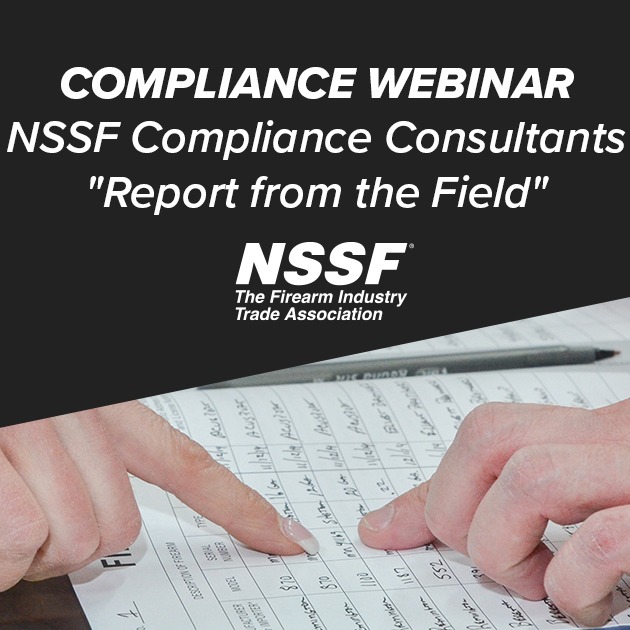 The risk of ATF administrative actions, including license revocation, demands proactive measures. This presentation will help you gather valuable insights for maintaining compliance at your firearms business.
The risk of ATF administrative actions, including license revocation, demands proactive measures. This presentation will help you gather valuable insights for maintaining compliance at your firearms business.
Retired ATF Director of Industry Operations Judyth LeDoux and Compliance Expert John ‘JC’ Clark – both NSSF Compliance Consultants, address critical topics impacting Federal Firearms Licensees (FFLs) while delving into essential topics that every FFL should be aware of.
Watch at SHOT University™ Online
NSSF Member Webinars
 |
 |
| From transfers to inspections to trace, the new (as of 2023) Form 4473 is a critical document for all firearms retailers. This course is designed to take you step-by-step and line-by-line through the nuances of completing each section of ATF Form 4473. | Presented by Jason Smith, this 3 part course focuses on range safety and health specifically through the lens of the OSHA’s 7 Core Elements and recommendations for workplace safety. |
More Range Compliance Resources Here
Looking for more education opportunities?
Consider NSSF’s SHOT University Online, a one-stop e-learning platform for firearms retailers and ranges. On-demand and free for NSSF members, this library of interactive online courses provides a deep dive on critical topics ranging from compliance and regulatory issues to operational guidance and business improvement for both business owners and employees.
Learn more about SHOT University Online
Looking for more guidance?
NSSF’s Premium Range Membership offers unparalleled protection and benefits. Designed to offer the best protection and benefits in the industry, this membership is available to any qualifying NSSF range or retailer/range member who is not currently facing any OSHA and or state OSH violations.
Membership directly supports NSSF in its mission to promote, protect and preserve our industry and our sports. NSSF stands in defense of every segment of our industry on Capitol Hill and in state capitols nationwide and is working on behalf of every one of its members every day to strengthen our industry. Start your application today, or upgrade your existing membership to premium.
24-Hour Compliance Hotline
NSSF members can greatly benefit from the NSSF’s Retail Member Hotline. The toll-free hotline will bring calls in to the NSSF headquarters on a 24/7 basis. If questions regarding compliance, transactions, legislation or any other topic cannot be answered at the time of the call, an all-out attempt will be made to provide the answer within 24 hours.
NSSF members have exclusive 24/7 access to the NSSF’s Retail Member Hotline. Non-member retailers can view some of the questions that have been asked and answered through this service here.
Compliance Resources for Members
NSSF offers an array of resources and information to help members operate their businesses in compliance with laws and regulations. NSSF’s regulatory compliance resources include articles, newsletters, videos, online training courses, legal and regulatory compliance consultants and more. Log in to access.
Are FFLs required to keep a copy of NICS Transaction Number information, other than recording the number on the 4473 and in the A&D?
No, it is not required, although we recommend you keep them in a separate folder, filed chronologically, for your use only in case you ever find there is information missing on the 4473 concerning a background check.
This question was asked during the NSSF Webinar: NSSF Compliance Consultant’s “Report from the Field.”
NSSF Compliance Consultants “Report from the Field”
 The risk of ATF administrative actions, including license revocation, demands proactive measures. This presentation will help you gather valuable insights for maintaining compliance at your firearms business.
The risk of ATF administrative actions, including license revocation, demands proactive measures. This presentation will help you gather valuable insights for maintaining compliance at your firearms business.
Retired ATF Director of Industry Operations Judyth LeDoux and Compliance Expert John ‘JC’ Clark – both NSSF Compliance Consultants, address critical topics impacting Federal Firearms Licensees (FFLs) while delving into essential topics that every FFL should be aware of.
Watch at SHOT University™ Online
NSSF Member Webinars
 |
 |
| From transfers to inspections to trace, the new (as of 2023) Form 4473 is a critical document for all firearms retailers. This course is designed to take you step-by-step and line-by-line through the nuances of completing each section of ATF Form 4473. | Presented by Jason Smith, this 3 part course focuses on range safety and health specifically through the lens of the OSHA’s 7 Core Elements and recommendations for workplace safety. |
More Range Compliance Resources Here
Looking for more education opportunities?
Consider NSSF’s SHOT University Online, a one-stop e-learning platform for firearms retailers and ranges. On-demand and free for NSSF members, this library of interactive online courses provides a deep dive on critical topics ranging from compliance and regulatory issues to operational guidance and business improvement for both business owners and employees.
Learn more about SHOT University Online
Looking for more guidance?
NSSF’s Premium Range Membership offers unparalleled protection and benefits. Designed to offer the best protection and benefits in the industry, this membership is available to any qualifying NSSF range or retailer/range member who is not currently facing any OSHA and or state OSH violations.
Membership directly supports NSSF in its mission to promote, protect and preserve our industry and our sports. NSSF stands in defense of every segment of our industry on Capitol Hill and in state capitols nationwide and is working on behalf of every one of its members every day to strengthen our industry. Start your application today, or upgrade your existing membership to premium.
24-Hour Compliance Hotline
NSSF members can greatly benefit from the NSSF’s Retail Member Hotline. The toll-free hotline will bring calls in to the NSSF headquarters on a 24/7 basis. If questions regarding compliance, transactions, legislation or any other topic cannot be answered at the time of the call, an all-out attempt will be made to provide the answer within 24 hours.
NSSF members have exclusive 24/7 access to the NSSF’s Retail Member Hotline. Non-member retailers can view some of the questions that have been asked and answered through this service here.
Compliance Resources for Members
NSSF offers an array of resources and information to help members operate their businesses in compliance with laws and regulations. NSSF’s regulatory compliance resources include articles, newsletters, videos, online training courses, legal and regulatory compliance consultants and more. Log in to access.
What are the Form 3 retention requirements for NFA items that are no longer on my NFRTR and have been transferred out to another FFL/SOT?
Pursuant to the regulations at 27 CFR 478.131 (Records), you must maintain your records in chronological order, at your place of business in a separate record (this would be a file folder or binder) consisting of the documents showing the registration of any firearms to you. This means that you are only required to maintain the Form 3s for firearms that are still registered to you and in your inventory. Even though that is what the regulation states, we at NSSF recommend that you keep them indefinitely in a file folder or binder and indicate on the form that it was sold and to whom. That way, if there is ever a mistake made on the NFRTR (this is the National Firearms Registration and Transfer Record) by ATF, you still have the form(s). We also recommend that when you transfer an NFA weapon on a Form 4, attach a copy of the Form 4 to the corresponding ATF Form 4473.
This question was asked during NSSF Compliance Consultant’s “Report from the Field.”
NSSF Compliance Consultants “Report from the Field”
 The risk of ATF administrative actions, including license revocation, demands proactive measures. This presentation will help you gather valuable insights for maintaining compliance at your firearms business.
The risk of ATF administrative actions, including license revocation, demands proactive measures. This presentation will help you gather valuable insights for maintaining compliance at your firearms business.
Retired ATF Director of Industry Operations Judyth LeDoux and Compliance Expert John ‘JC’ Clark – both NSSF Compliance Consultants, address critical topics impacting Federal Firearms Licensees (FFLs) while delving into essential topics that every FFL should be aware of.
Watch at SHOT University™ Online
NSSF Member Webinars
 |
 |
| From transfers to inspections to trace, the new (as of 2023) Form 4473 is a critical document for all firearms retailers. This course is designed to take you step-by-step and line-by-line through the nuances of completing each section of ATF Form 4473. | Presented by Jason Smith, this 3 part course focuses on range safety and health specifically through the lens of the OSHA’s 7 Core Elements and recommendations for workplace safety. |
More Range Compliance Resources Here
Looking for more education opportunities?
Consider NSSF’s SHOT University Online, a one-stop e-learning platform for firearms retailers and ranges. On-demand and free for NSSF members, this library of interactive online courses provides a deep dive on critical topics ranging from compliance and regulatory issues to operational guidance and business improvement for both business owners and employees.
Learn more about SHOT University Online
Looking for more guidance?
NSSF’s Premium Range Membership offers unparalleled protection and benefits. Designed to offer the best protection and benefits in the industry, this membership is available to any qualifying NSSF range or retailer/range member who is not currently facing any OSHA and or state OSH violations.
Membership directly supports NSSF in its mission to promote, protect and preserve our industry and our sports. NSSF stands in defense of every segment of our industry on Capitol Hill and in state capitols nationwide and is working on behalf of every one of its members every day to strengthen our industry. Start your application today, or upgrade your existing membership to premium.
24-Hour Compliance Hotline
NSSF members can greatly benefit from the NSSF’s Retail Member Hotline. The toll-free hotline will bring calls in to the NSSF headquarters on a 24/7 basis. If questions regarding compliance, transactions, legislation or any other topic cannot be answered at the time of the call, an all-out attempt will be made to provide the answer within 24 hours.
NSSF members have exclusive 24/7 access to the NSSF’s Retail Member Hotline. Non-member retailers can view some of the questions that have been asked and answered through this service here.
Compliance Resources for Members
NSSF offers an array of resources and information to help members operate their businesses in compliance with laws and regulations. NSSF’s regulatory compliance resources include articles, newsletters, videos, online training courses, legal and regulatory compliance consultants and more. Log in to access.
When filling out FAET returns, why are line 9 and 10 broken out separately if they both result in "no tax due?" Why does it matter that we show tax-free and tax-exempt sales?
Lines 9 and 10 are broken out separately primarily because different supporting documentation is required for each (e.g. a TTB F 5300.28 is required for tax-free). Any entry that is truly tax-exempt/tax-free entered will not effect the calculated results. The fact you know the difference and record the entries correctly sets a “tone” with the compliance auditor that you know what you are doing. US military sales recorded on line 10 rather than line 9 will be written up by the auditor as a compliance violation with no monetary effect.
This question was asked during the NSSF webinar Common Errors on the Firearm Ammunition Excise Tax (FAET) Quarterly Return.
Common Errors on the Firearm Ammunition Excise Tax (FAET) Quarterly Return
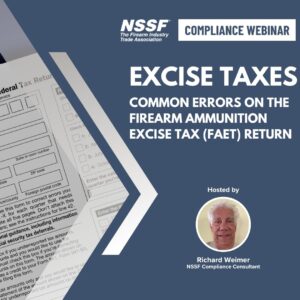 Firearm and ammunition manufacturers and importers generally are required to calculate, file and pay quarterly Firearm Ammunition Excise Tax (FAET). The form used is the FEDERAL FIREARMS AND AMMUNITION QUARTERLY EXCISE TAX RETURN (TTB F 5300.26).
Firearm and ammunition manufacturers and importers generally are required to calculate, file and pay quarterly Firearm Ammunition Excise Tax (FAET). The form used is the FEDERAL FIREARMS AND AMMUNITION QUARTERLY EXCISE TAX RETURN (TTB F 5300.26).
This webinar is designed to help guide employees responsible for preparing FAET returns in accurately completing and supporting the calculations necessary to compute the excise tax liability. NSSF Excise Tax Consultant Richard Weimer presents this insightful discussion where he goes through form TTB F 5300.26 line by line pointing out common errors made while showing you how to correct them.
Watch at SHOT University™ Online
NSSF Member Webinars
 |
 |
| From transfers to inspections to trace, the new (as of 2023) Form 4473 is a critical document for all firearms retailers. This course is designed to take you step-by-step and line-by-line through the nuances of completing each section of ATF Form 4473. | Presented by Jason Smith, this 3 part course focuses on range safety and health specifically through the lens of the OSHA’s 7 Core Elements and recommendations for workplace safety. |
More Range Compliance Resources Here
Looking for more education opportunities?
Consider NSSF’s SHOT University Online, a one-stop e-learning platform for firearms retailers and ranges. On-demand and free for NSSF members, this library of interactive online courses provides a deep dive on critical topics ranging from compliance and regulatory issues to operational guidance and business improvement for both business owners and employees.
Learn more about SHOT University Online
Looking for more guidance?
NSSF’s Premium Range Membership offers unparalleled protection and benefits. Designed to offer the best protection and benefits in the industry, this membership is available to any qualifying NSSF range or retailer/range member who is not currently facing any OSHA and or state OSH violations.
Membership directly supports NSSF in its mission to promote, protect and preserve our industry and our sports. NSSF stands in defense of every segment of our industry on Capitol Hill and in state capitols nationwide and is working on behalf of every one of its members every day to strengthen our industry. Start your application today, or upgrade your existing membership to premium.
24-Hour Compliance Hotline
NSSF members can greatly benefit from the NSSF’s Retail Member Hotline. The toll-free hotline will bring calls in to the NSSF headquarters on a 24/7 basis. If questions regarding compliance, transactions, legislation or any other topic cannot be answered at the time of the call, an all-out attempt will be made to provide the answer within 24 hours.
NSSF members have exclusive 24/7 access to the NSSF’s Retail Member Hotline. Non-member retailers can view some of the questions that have been asked and answered through this service here.
Compliance Resources for Members
NSSF offers an array of resources and information to help members operate their businesses in compliance with laws and regulations. NSSF’s regulatory compliance resources include articles, newsletters, videos, online training courses, legal and regulatory compliance consultants and more. Log in to access.
Do I need to file my quarterly Firearm Ammunition Excise Tax return if there were no sales?
If you are in business and have filed in the past but owe no taxes for the present quarter, you are not required to file a return. I recommend you file anyway, indicating zero sales.
This question was asked during the NSSF webinar Common Errors on the Firearm Ammunition Excise Tax (FAET) Quarterly Return.
Common Errors on the Firearm Ammunition Excise Tax (FAET) Quarterly Return
 Firearm and ammunition manufacturers and importers generally are required to calculate, file and pay quarterly Firearm Ammunition Excise Tax (FAET). The form used is the FEDERAL FIREARMS AND AMMUNITION QUARTERLY EXCISE TAX RETURN (TTB F 5300.26).
Firearm and ammunition manufacturers and importers generally are required to calculate, file and pay quarterly Firearm Ammunition Excise Tax (FAET). The form used is the FEDERAL FIREARMS AND AMMUNITION QUARTERLY EXCISE TAX RETURN (TTB F 5300.26).
This webinar is designed to help guide employees responsible for preparing FAET returns in accurately completing and supporting the calculations necessary to compute the excise tax liability. NSSF Excise Tax Consultant Richard Weimer presents this insightful discussion where he goes through form TTB F 5300.26 line by line pointing out common errors made while showing you how to correct them.
Watch at SHOT University™ Online
NSSF Member Webinars
 |
 |
| From transfers to inspections to trace, the new (as of 2023) Form 4473 is a critical document for all firearms retailers. This course is designed to take you step-by-step and line-by-line through the nuances of completing each section of ATF Form 4473. | Presented by Jason Smith, this 3 part course focuses on range safety and health specifically through the lens of the OSHA’s 7 Core Elements and recommendations for workplace safety. |
More Range Compliance Resources Here
Looking for more education opportunities?
Consider NSSF’s SHOT University Online, a one-stop e-learning platform for firearms retailers and ranges. On-demand and free for NSSF members, this library of interactive online courses provides a deep dive on critical topics ranging from compliance and regulatory issues to operational guidance and business improvement for both business owners and employees.
Learn more about SHOT University Online
Looking for more guidance?
NSSF’s Premium Range Membership offers unparalleled protection and benefits. Designed to offer the best protection and benefits in the industry, this membership is available to any qualifying NSSF range or retailer/range member who is not currently facing any OSHA and or state OSH violations.
Membership directly supports NSSF in its mission to promote, protect and preserve our industry and our sports. NSSF stands in defense of every segment of our industry on Capitol Hill and in state capitols nationwide and is working on behalf of every one of its members every day to strengthen our industry. Start your application today, or upgrade your existing membership to premium.
24-Hour Compliance Hotline
NSSF members can greatly benefit from the NSSF’s Retail Member Hotline. The toll-free hotline will bring calls in to the NSSF headquarters on a 24/7 basis. If questions regarding compliance, transactions, legislation or any other topic cannot be answered at the time of the call, an all-out attempt will be made to provide the answer within 24 hours.
NSSF members have exclusive 24/7 access to the NSSF’s Retail Member Hotline. Non-member retailers can view some of the questions that have been asked and answered through this service here.
Compliance Resources for Members
NSSF offers an array of resources and information to help members operate their businesses in compliance with laws and regulations. NSSF’s regulatory compliance resources include articles, newsletters, videos, online training courses, legal and regulatory compliance consultants and more. Log in to access.
How are the Firearm Ammunition Excise taxes on used consignment firearms calculated? Would that qualify for treatment as a "constructive" price?
No, quarterly Firearm Ammunition Excise Tax returns are not required for any used transaction; they are necessary for the first sale only.
This question was asked during the NSSF webinar Common Errors on the Firearm Ammunition Excise Tax (FAET) Quarterly Return.
Common Errors on the Firearm Ammunition Excise Tax (FAET) Quarterly Return
 Firearm and ammunition manufacturers and importers generally are required to calculate, file and pay quarterly Firearm Ammunition Excise Tax (FAET). The form used is the FEDERAL FIREARMS AND AMMUNITION QUARTERLY EXCISE TAX RETURN (TTB F 5300.26).
Firearm and ammunition manufacturers and importers generally are required to calculate, file and pay quarterly Firearm Ammunition Excise Tax (FAET). The form used is the FEDERAL FIREARMS AND AMMUNITION QUARTERLY EXCISE TAX RETURN (TTB F 5300.26).
This webinar is designed to help guide employees responsible for preparing FAET returns in accurately completing and supporting the calculations necessary to compute the excise tax liability. NSSF Excise Tax Consultant Richard Weimer presents this insightful discussion where he goes through form TTB F 5300.26 line by line pointing out common errors made while showing you how to correct them.
Watch at SHOT University™ Online
NSSF Member Webinars
 |
 |
| From transfers to inspections to trace, the new (as of 2023) Form 4473 is a critical document for all firearms retailers. This course is designed to take you step-by-step and line-by-line through the nuances of completing each section of ATF Form 4473. | Presented by Jason Smith, this 3 part course focuses on range safety and health specifically through the lens of the OSHA’s 7 Core Elements and recommendations for workplace safety. |
More Range Compliance Resources Here
Looking for more education opportunities?
Consider NSSF’s SHOT University Online, a one-stop e-learning platform for firearms retailers and ranges. On-demand and free for NSSF members, this library of interactive online courses provides a deep dive on critical topics ranging from compliance and regulatory issues to operational guidance and business improvement for both business owners and employees.
Learn more about SHOT University Online
Looking for more guidance?
NSSF’s Premium Range Membership offers unparalleled protection and benefits. Designed to offer the best protection and benefits in the industry, this membership is available to any qualifying NSSF range or retailer/range member who is not currently facing any OSHA and or state OSH violations.
Membership directly supports NSSF in its mission to promote, protect and preserve our industry and our sports. NSSF stands in defense of every segment of our industry on Capitol Hill and in state capitols nationwide and is working on behalf of every one of its members every day to strengthen our industry. Start your application today, or upgrade your existing membership to premium.
24-Hour Compliance Hotline
NSSF members can greatly benefit from the NSSF’s Retail Member Hotline. The toll-free hotline will bring calls in to the NSSF headquarters on a 24/7 basis. If questions regarding compliance, transactions, legislation or any other topic cannot be answered at the time of the call, an all-out attempt will be made to provide the answer within 24 hours.
NSSF members have exclusive 24/7 access to the NSSF’s Retail Member Hotline. Non-member retailers can view some of the questions that have been asked and answered through this service here.
Compliance Resources for Members
NSSF offers an array of resources and information to help members operate their businesses in compliance with laws and regulations. NSSF’s regulatory compliance resources include articles, newsletters, videos, online training courses, legal and regulatory compliance consultants and more. Log in to access.
If a seller who does not have a TTB tax free registration number in Q1 makes Q1 sales that would have been tax free if they had a TTB TF Number, can the seller claim a credit in Q2 after a TTB registration number is assigned? How would that be presented on the form?
Yes, the Q2 entry would be recorded on the return on page 2, Schedule B–Decreasing Adjustment. Use the drop-down menu and select #2, then carry Schedule B total to line 20 of page 1.
This question was asked during the NSSF webinar Common Errors on the Firearm Ammunition Excise Tax (FAET) Quarterly Return.
Common Errors on the Firearm Ammunition Excise Tax (FAET) Quarterly Return
 Firearm and ammunition manufacturers and importers generally are required to calculate, file and pay quarterly Firearm Ammunition Excise Tax (FAET). The form used is the FEDERAL FIREARMS AND AMMUNITION QUARTERLY EXCISE TAX RETURN (TTB F 5300.26).
Firearm and ammunition manufacturers and importers generally are required to calculate, file and pay quarterly Firearm Ammunition Excise Tax (FAET). The form used is the FEDERAL FIREARMS AND AMMUNITION QUARTERLY EXCISE TAX RETURN (TTB F 5300.26).
This webinar is designed to help guide employees responsible for preparing FAET returns in accurately completing and supporting the calculations necessary to compute the excise tax liability. NSSF Excise Tax Consultant Richard Weimer presents this insightful discussion where he goes through form TTB F 5300.26 line by line pointing out common errors made while showing you how to correct them.
Watch at SHOT University™ Online
NSSF Member Webinars
 |
 |
| From transfers to inspections to trace, the new (as of 2023) Form 4473 is a critical document for all firearms retailers. This course is designed to take you step-by-step and line-by-line through the nuances of completing each section of ATF Form 4473. | Presented by Jason Smith, this 3 part course focuses on range safety and health specifically through the lens of the OSHA’s 7 Core Elements and recommendations for workplace safety. |
More Range Compliance Resources Here
Looking for more education opportunities?
Consider NSSF’s SHOT University Online, a one-stop e-learning platform for firearms retailers and ranges. On-demand and free for NSSF members, this library of interactive online courses provides a deep dive on critical topics ranging from compliance and regulatory issues to operational guidance and business improvement for both business owners and employees.
Learn more about SHOT University Online
Looking for more guidance?
NSSF’s Premium Range Membership offers unparalleled protection and benefits. Designed to offer the best protection and benefits in the industry, this membership is available to any qualifying NSSF range or retailer/range member who is not currently facing any OSHA and or state OSH violations.
Membership directly supports NSSF in its mission to promote, protect and preserve our industry and our sports. NSSF stands in defense of every segment of our industry on Capitol Hill and in state capitols nationwide and is working on behalf of every one of its members every day to strengthen our industry. Start your application today, or upgrade your existing membership to premium.
24-Hour Compliance Hotline
NSSF members can greatly benefit from the NSSF’s Retail Member Hotline. The toll-free hotline will bring calls in to the NSSF headquarters on a 24/7 basis. If questions regarding compliance, transactions, legislation or any other topic cannot be answered at the time of the call, an all-out attempt will be made to provide the answer within 24 hours.
NSSF members have exclusive 24/7 access to the NSSF’s Retail Member Hotline. Non-member retailers can view some of the questions that have been asked and answered through this service here.
Compliance Resources for Members
NSSF offers an array of resources and information to help members operate their businesses in compliance with laws and regulations. NSSF’s regulatory compliance resources include articles, newsletters, videos, online training courses, legal and regulatory compliance consultants and more. Log in to access.

